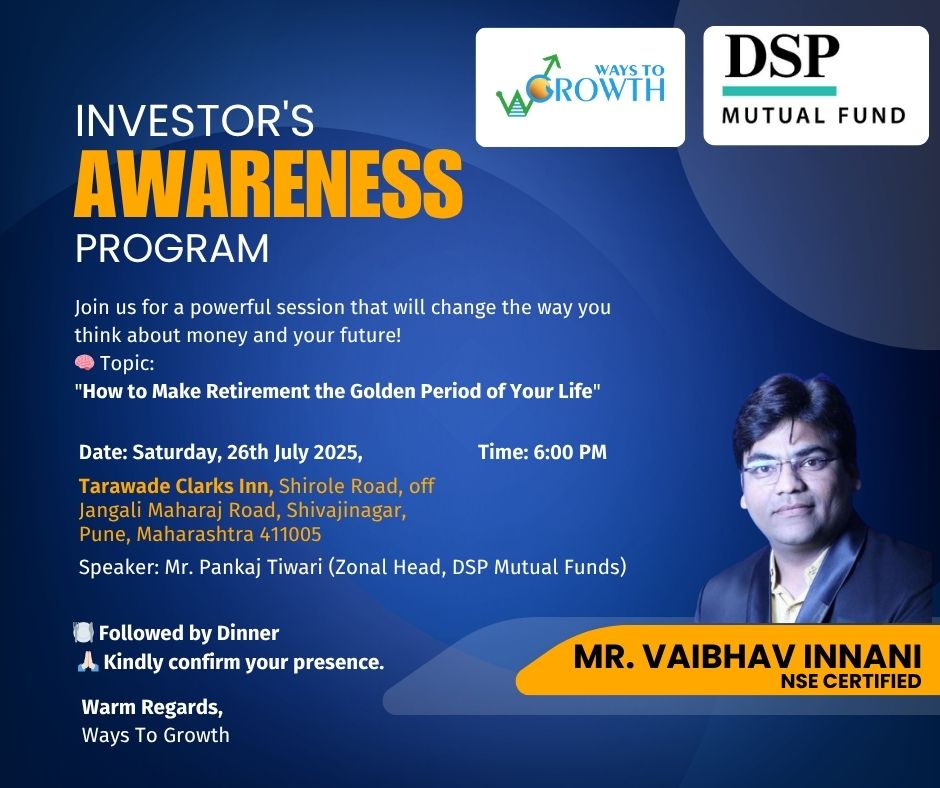Investing wisely is the cornerstone of financial independence, yet many lack the knowledge to make informed decisions. An Investors Awareness Program bridges this gap, equipping individuals with the tools and insights needed to navigate the complex world of finance. In this blog, we explore the importance of investor education, key components of an effective awareness program, and how it can transform your financial future.
Why Investor Awareness Matters
Financial markets are evolving rapidly, with new opportunities like mutual funds, stocks, bonds, and cryptocurrencies emerging daily. However, without proper guidance, investors risk making costly mistakes. An Investors Awareness Program educates individuals on:
- Risk Management: Understanding the balance between risk and reward.
- Investment Options: Exploring stocks, bonds, ETFs, real estate, and more.
- Financial Planning: Setting realistic goals for wealth creation.
- Avoiding Scams: Recognizing fraudulent schemes and Ponzi traps.
In 2025, with economic uncertainties and inflation concerns, investor education is more critical than ever. Programs like these empower you to make confident, informed decisions.
Key Components of an Investors Awareness Program
A well-structured program covers essential topics to build financial literacy. Here’s what to expect:
1. Understanding Financial Markets
Learn the basics of how stock markets, mutual funds, and other investment vehicles work. Topics include:
- Stock market indices (e.g., S&P 500, NIFTY 50).
- Types of investments (equities, debt instruments, derivatives).
- Market trends and their impact on portfolios.
2. Risk Assessment and Diversification
Diversification is key to minimizing losses. Programs teach:
- How to assess risk tolerance.
- Strategies for portfolio diversification.
- The role of asset allocation in long-term growth.
3. Regulatory Framework and Investor Protection
Understand the role of regulatory bodies like the SEC (U.S.) or SEBI (India). Learn about:
- Investor rights and protections.
- How to verify legitimate investment opportunities.
- Reporting mechanisms for fraud or misconduct.
4. Practical Tools and Resources
Participants gain access to:
- Budgeting and investment calculators.
- Online platforms for tracking investments.
- Workshops on reading financial statements and market reports.
5. Behavioral Finance
Emotions often drive poor investment decisions. Programs address:
- Overcoming fear and greed.
- Avoiding herd mentality in volatile markets.
- Building a disciplined investment approach.
Benefits of Joining an Investors Awareness Program
- Informed Decision-Making: Make choices based on knowledge, not speculation.
- Long-Term Wealth Creation: Plan for retirement, education, or major life goals.
- Confidence in Investing: Navigate markets without fear of losses.
- Community Support: Connect with like-minded individuals and experts.
How to Choose the Right Program
Not all programs are created equal. Look for:
- Credibility: Programs backed by reputed financial institutions or regulatory bodies.
- Expert Trainers: Sessions led by certified financial advisors or industry professionals.
- Accessibility: Online or hybrid formats for convenience.
- Up-to-Date Content: Relevant to 2025’s market trends and regulations.
Follow us on Instagram : https://www.instagram.com/v.innani/
Start Investing in Mutual Funds : https://waystogrowth.com/#investment

